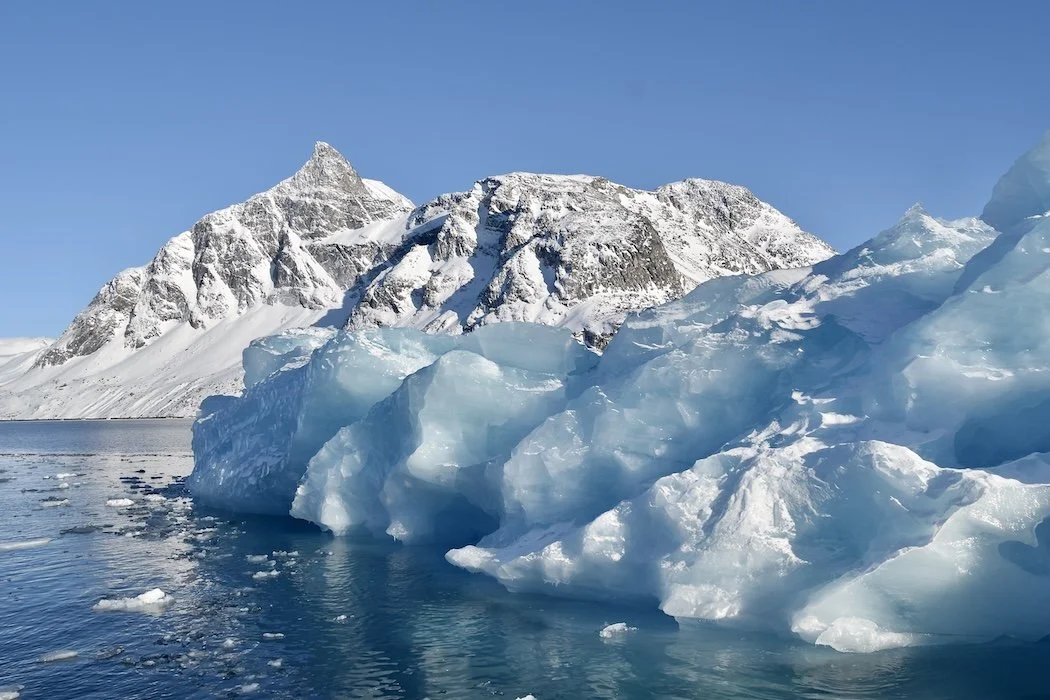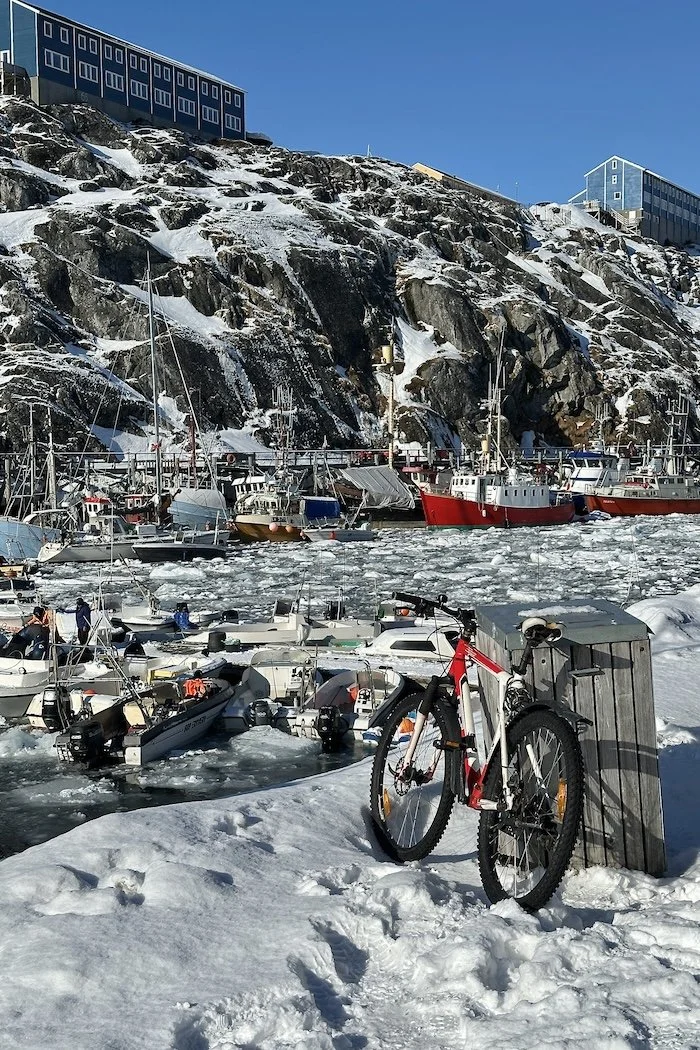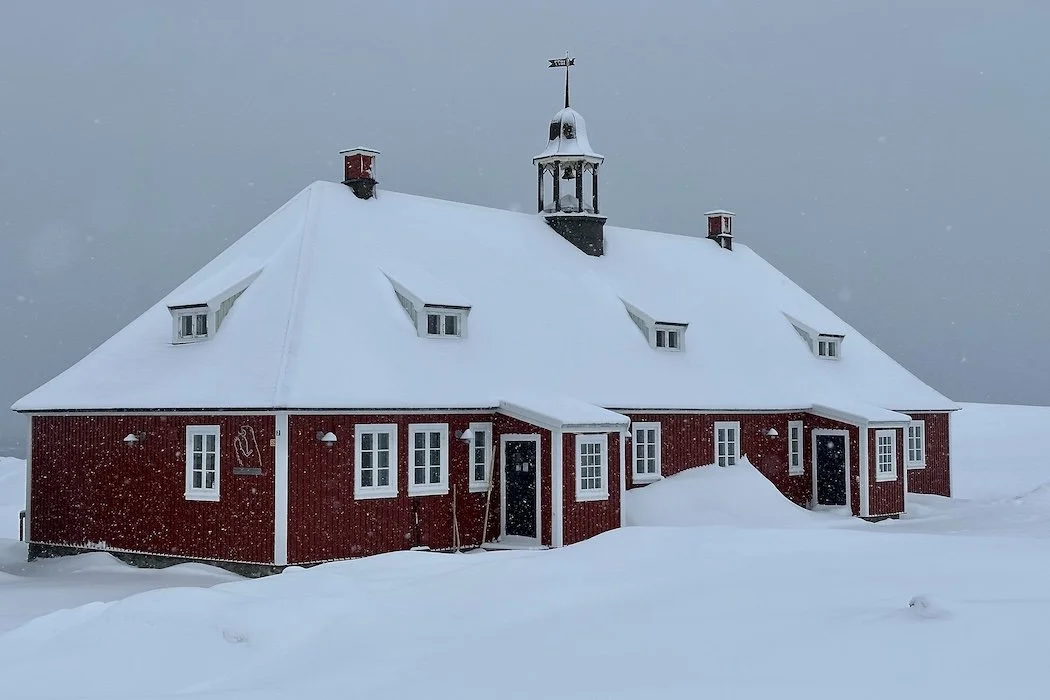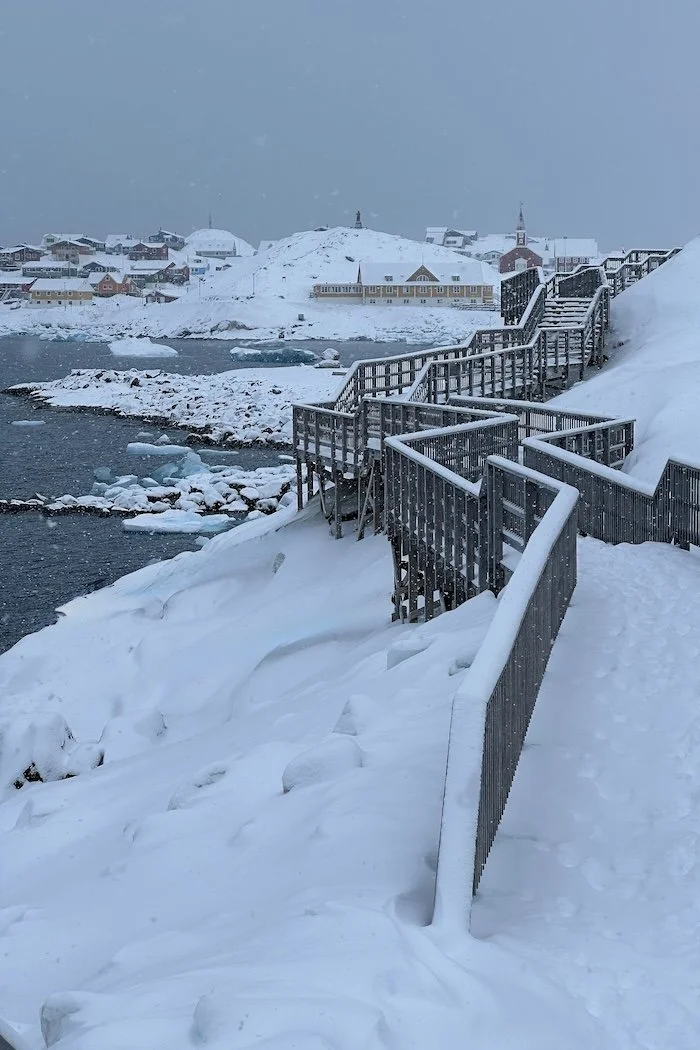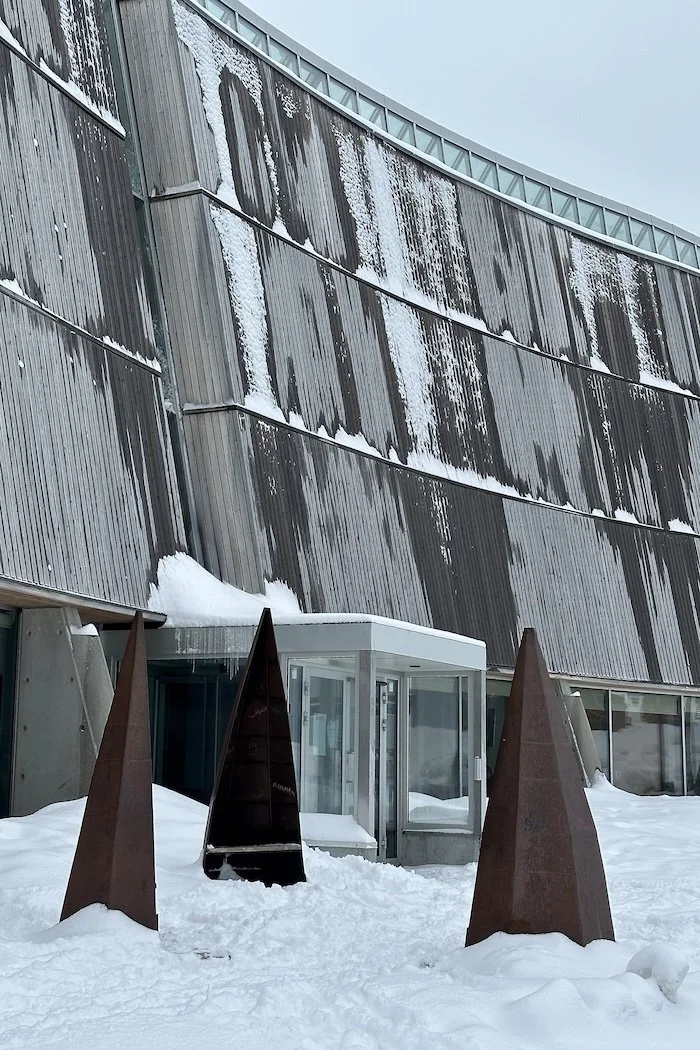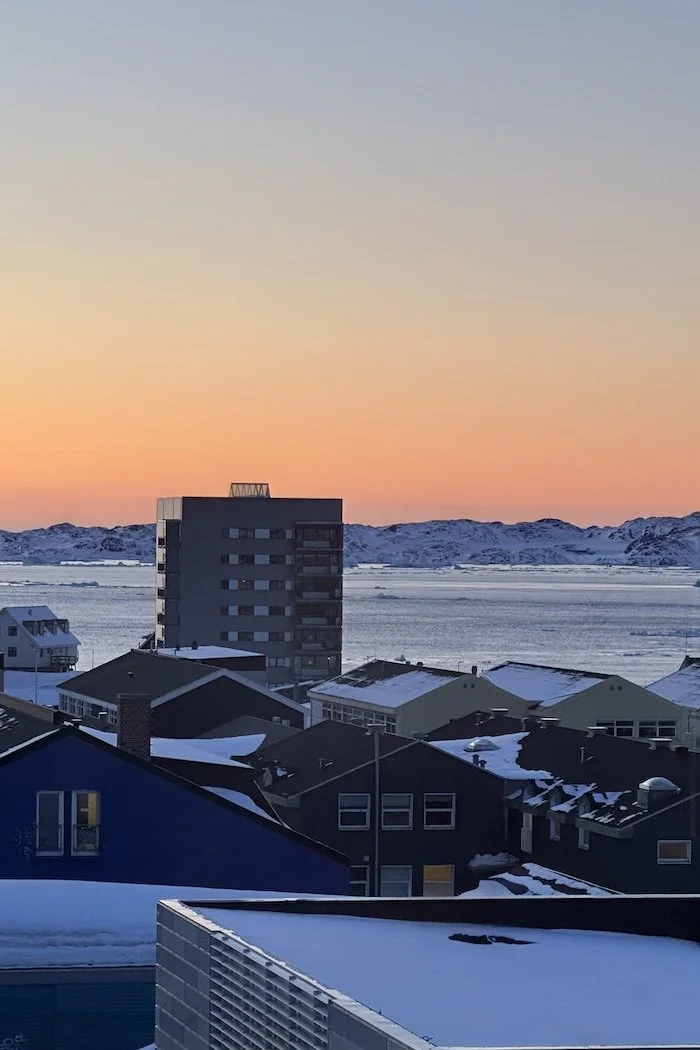Far away Nuuk Greenland
Sermitsaiq Mountain and a large iceberg in Nuup Kangerlua fjord near Nuuk
“Every once in a while, people need to be in the presence of things that are really far away.” — Ian Frazier
Nuuk, Greenland, a tiny city of 20,110 inhabitants located on the country's southwest coast, whose name means cape, is a fascinating capital. The world’s largest island, Greenland is an autonomous territory in the Kingdom of Denmark. A polar zone with temperatures ranging from +20C to -35C (+68- to -31F), covered 80% by the ice cap, with virtually no trees, and a tiny arable area in the south, Greenland has an otherworldly appeal. Adding to the appeal, Nuuk’s large fjord system is known for icebergs. Challenging Greenlandic is the official language, Danish the second language, and English a distant third. Combined with the cold, visiting faraway Greenland requires patience, flexibility, and an adventurous spirit, even when the spring equinox has returned the light yet left the Aurora Borealis.
Inhabited at intervals for 4500 years through immigration from the Arctic and Europe, it is the Thule cultural group of Inuit, arriving from Canada around AD 1200, who are the ancestors of today’s Greenlanders. They used umiak boats, kayaks, and dogsleds, surviving on hunting seals, other animals, and birds, and gathering berries and muscles in summer. In 986, Vikings settled the south and remained for 400 years until the Little Ice Age made life too difficult. Lutheran missionary Hans Egede led a joint mercantile-clerical expedition in 1721 that founded the settlement Godthåb (Good Hope), now Nuuk. Denmark’s 1953 Constitution ended Greenland's colonial status, integrating it fully into the Danish state. A 1979 referendum granted home rule; self-government followed in 2008.
The Colonial era remains evident at the Colonial Harbor, where original homes from the 17th and 18th centuries still face the sea and the icebergs. Hans Egede’s house stands a stone’s throw from the water where the sculpture Sassuma Arnaa, Mother of the Sea, sits on the rocks. Now a controversial figure, a statue of Hans Egede nonetheless adorns a hilltop overlooking the red wooden Church of Our Savior. The nearby Greenland National Museum showcases mummies and Inuit skinboats, while the adjacent Local Museum relays Nuuk’s development. The long seaside boardwalk is the most fun way to get there.
Downtown, the self-rule Parliament, library, and tall modern shopping mall flank the Katuaq Greenland Cultural Center, a film and concert hall. The architecturally significant building is part of Nuuk’s Art Walk, focusing attention on local art, including numerous large-scale sculptures and murals dotting the town. Nuuk Art Museum displays local artists’ work, whether traditionally inspired miniatures of wood, soapstone, and ivory, or modern watercolors, and graphics. Kalaaliaraq, the traditional market where fish, seals, and reindeer are sold, is also downtown. Greenland’s income still derives from sealing, hunting, and cod and shrimp fishing, in addition now to shipping, mining, and tourism.
Getting out on Nuup Kangerlua fjord is a must in any season. Nuuk Water Taxi offers a trip from the fishing harbor along the coast, past brightly colored houses, to the 1,210m (3,970ft) high Sermitsiaq mountain. The name means “big ice”, due to the glacier on the back side, which is now visibly receding. Sermitsiaq is visible from many angles in town and changes appearance depending on the light conditions. Other winter activities include skiing on Nuuk’s slopes served by two lifts. Summer is prime season for whale watching and kayaking the still icy waters of the extensive fjord systems or hiking to the two mountains just outside town.
Don’t Miss:
A boat ride on Nuup Kangerlua fjord past icebergs to Sermitsiaq mountain and glacier.
Serendipity:
Locals along the way- Making conversation with the attendant at the Nuuk Local Museum who was especially generous in answering questions about Nuuk’s history.
Lunch Tip:
Café & Icebar Kûnguark at the Colonial Harbor for excellent coffee and sandwiches.
Dinner Tip:
Sarfalik, on the top floor of the HHE Hotel, for superb fish and the view over Nuuk.
Bedtime:
HHE Express Hotel, new and modern, within walking distance to all in town.
Subscribe for inspiration to have my posts drop directly into your inbox. *If you enjoyed what you read, please share this post with like-minded travelers.*
*All photographs are mine, taken with my Nikon D5600 or iPhone 14 Pro.*

